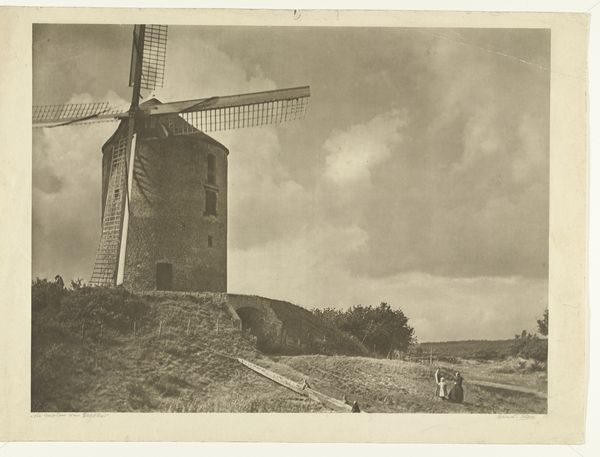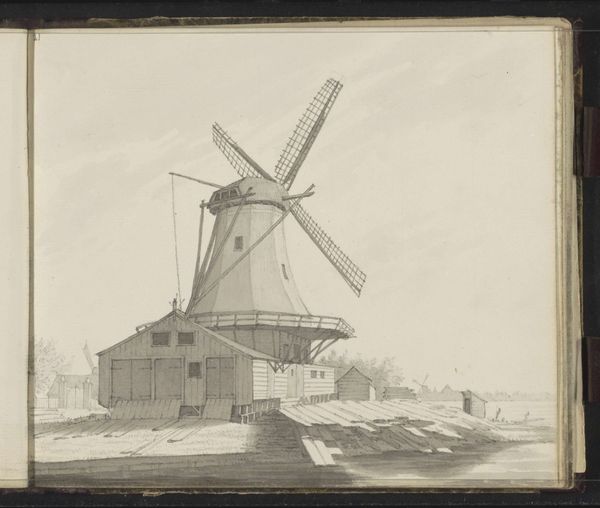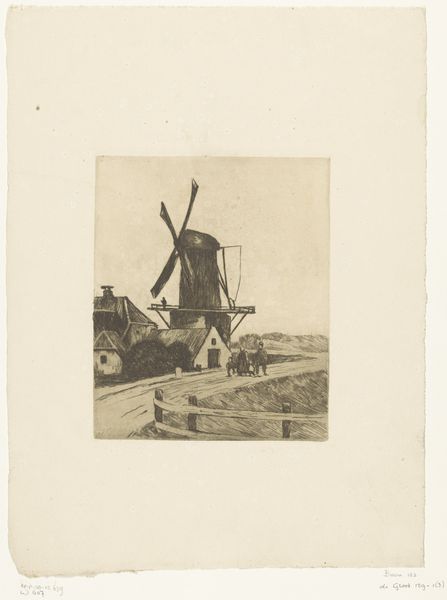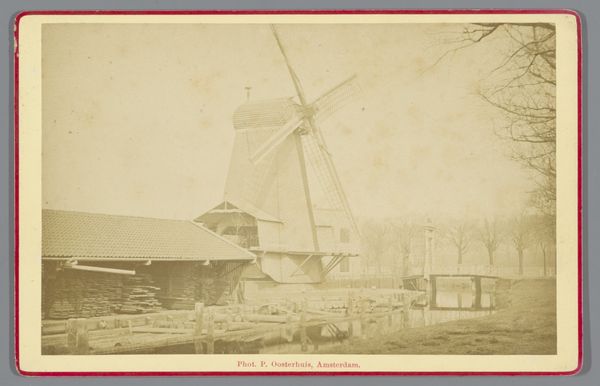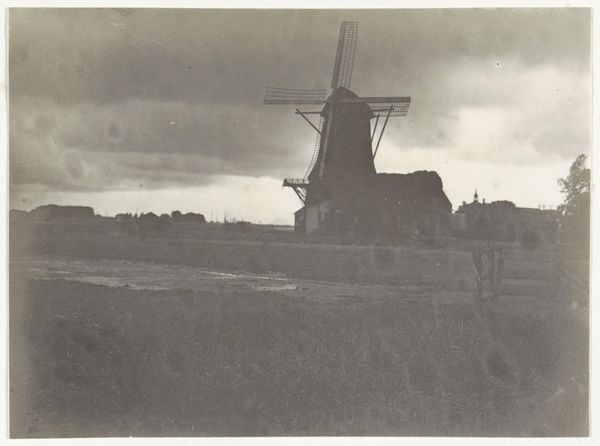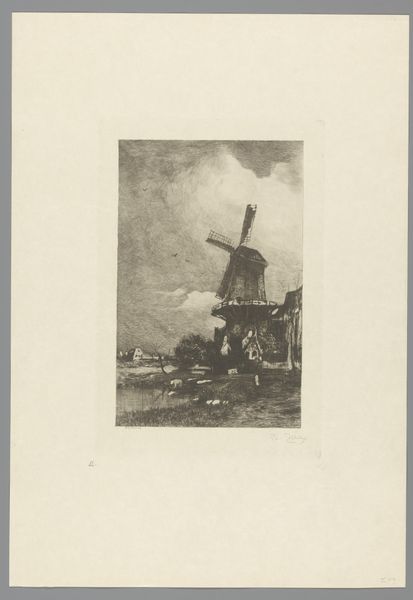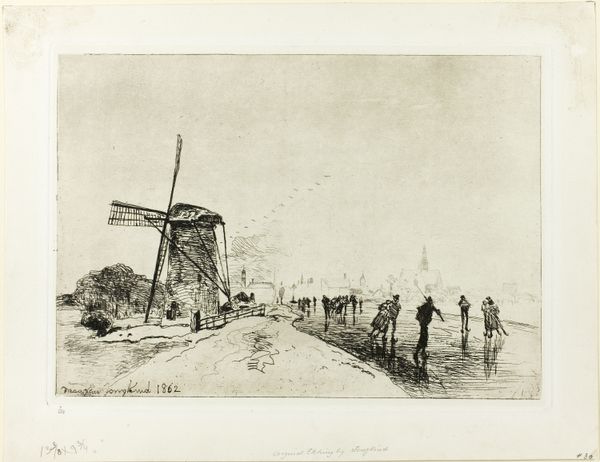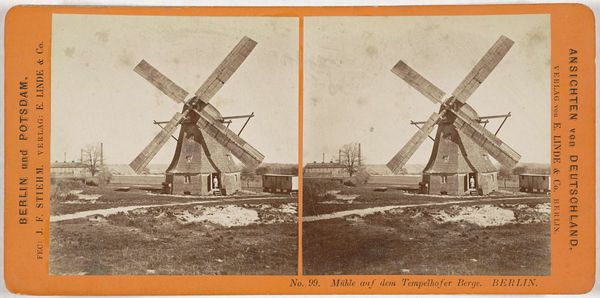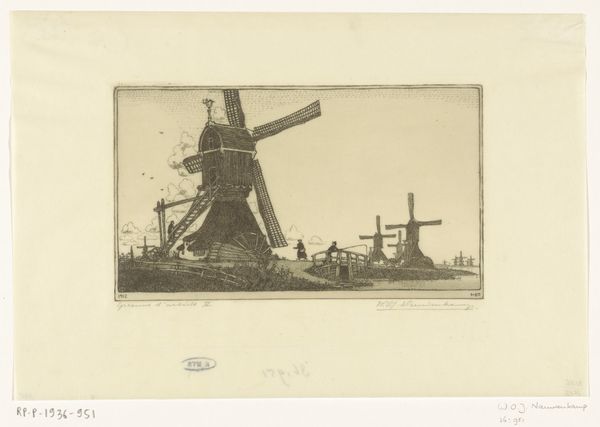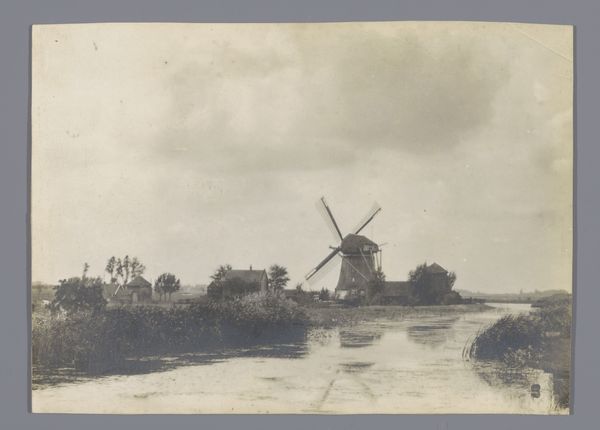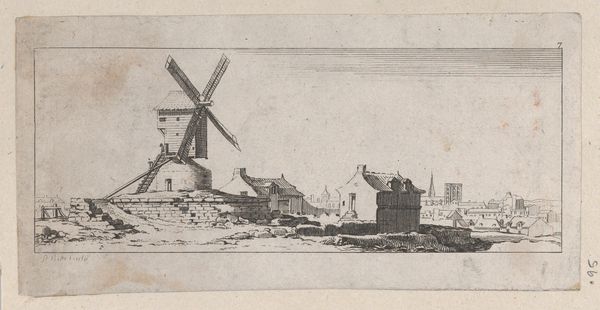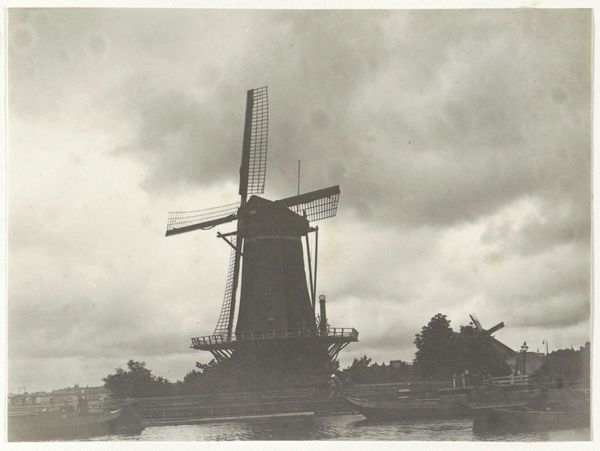
photography
#
aged paper
#
toned paper
#
medieval
#
landscape
#
photography
#
russian-avant-garde
#
realism
Dimensions: height 115 mm, width 82 mm
Copyright: Rijks Museum: Open Domain
Curator: This is an intriguing photograph entitled "Houten korenmolen in Rusland," or "Wooden Windmill in Russia," dating back to between 1903 and 1904. It's currently part of the Rijksmuseum collection. Editor: Oh, wow, it's…stark, isn't it? Almost feels like a forgotten fairytale, a bit lonely against that pale sky and snow. You can practically feel the Russian winter nipping at your nose. Curator: Indeed. Photography at the turn of the century was still finding its place. We can appreciate its documentary impulse, a capturing of a traditional, rural scene—a wooden windmill, crucial for processing grain. It’s a slice of Russian life at the dawn of a tumultuous century. Editor: Right, it’s definitely of its time. But it also feels strangely timeless, this wooden structure asserting itself against the landscape. I get a sense of human ingenuity, the impulse to adapt to a tough environment—but, there's something vulnerable about it too. Like it’s whispering stories of the past. Curator: Vulnerable, yes. Keep in mind that Russia in this period was on the cusp of massive social and political upheaval. Images of rural life like this often served both as records of what was being left behind and romanticized visions of an idealized past. This photograph exists at the intersection of realism and the burgeoning Russian avant-garde. Editor: I see that. It makes me wonder, though, who took this? What were their thoughts as they framed this shot? The bareness in the shot… Is that intentional? The old logs almost swallowed in snow—all those lines lead to a lonely vanishing point. Curator: Unfortunately, we lack precise information about the photographer. Often such archival photos end up separated from their provenance over time. But the impact of the image remains regardless, wouldn’t you agree? Editor: Absolutely. You get the distinct feeling it wasn't merely documenting the corn mill—the eye of the unseen artist, a soul connecting across decades to remind us that every image preserves some story, even when we don't have the storyteller's name. Curator: Precisely, and as we view the object now, perhaps it continues to create further stories within the space of its renewed contemporary audience.
Comments
No comments
Be the first to comment and join the conversation on the ultimate creative platform.
